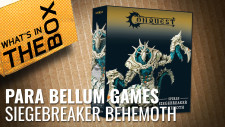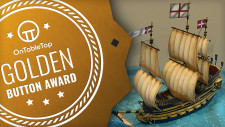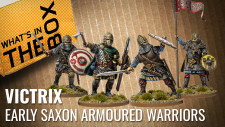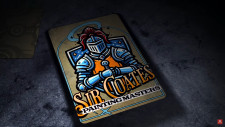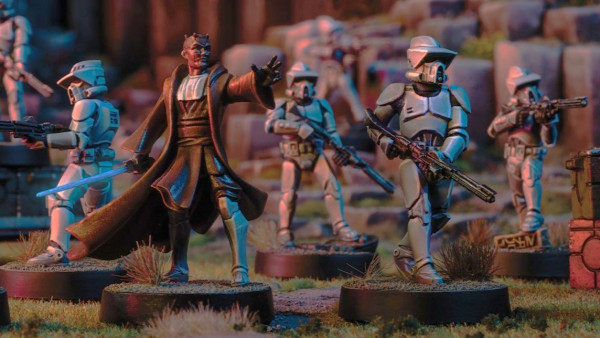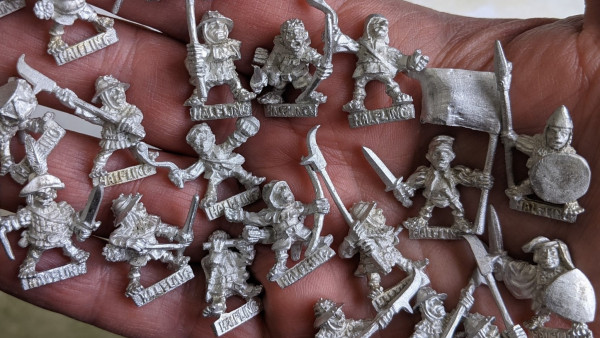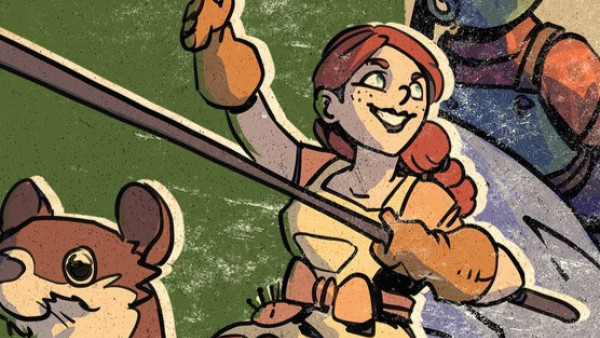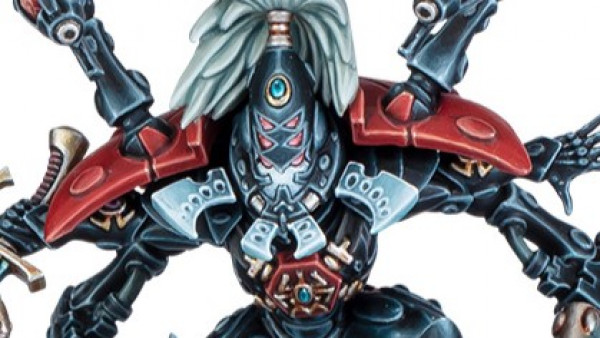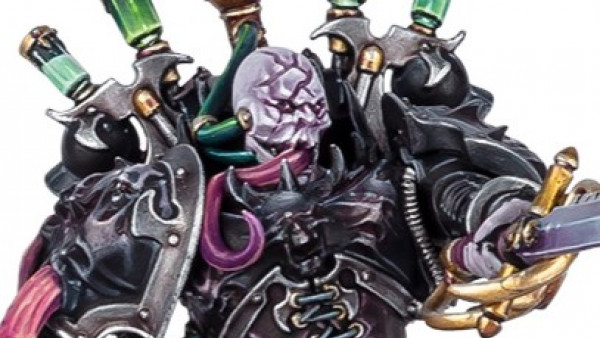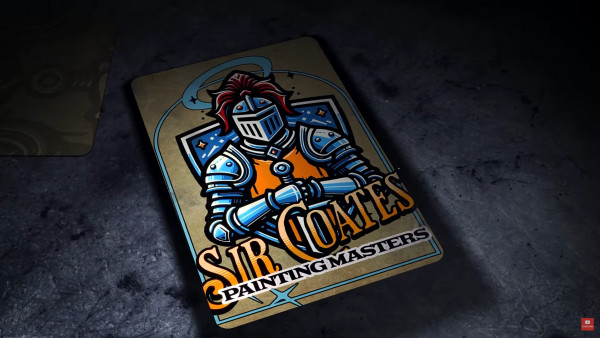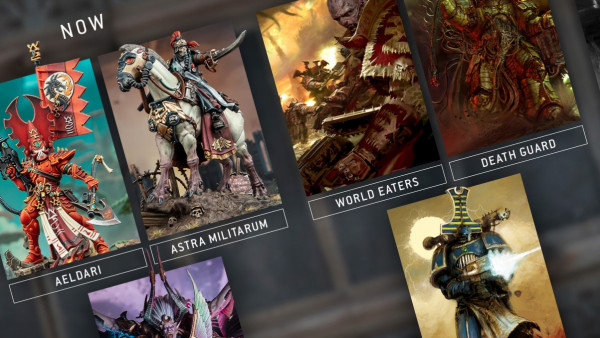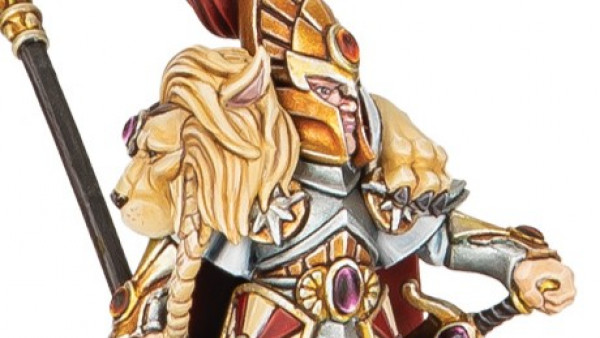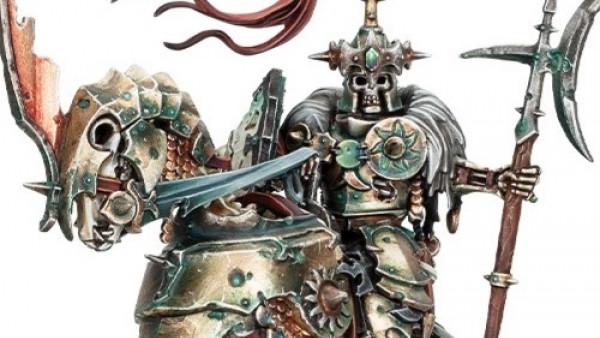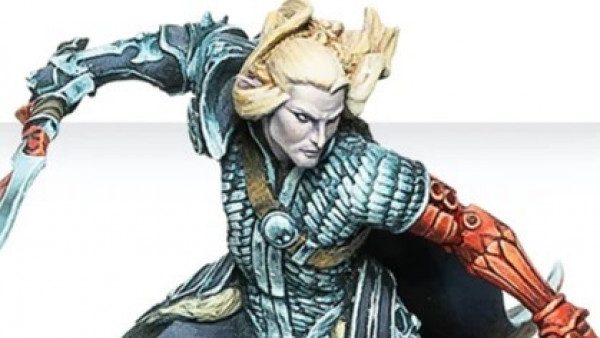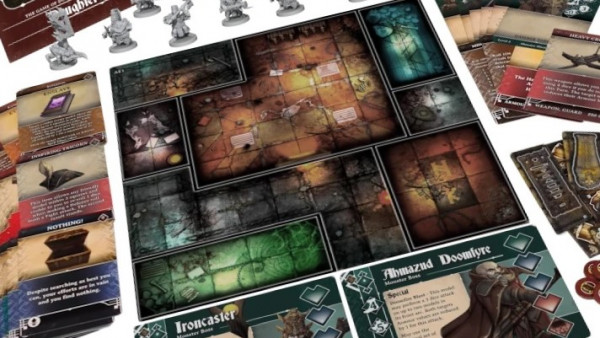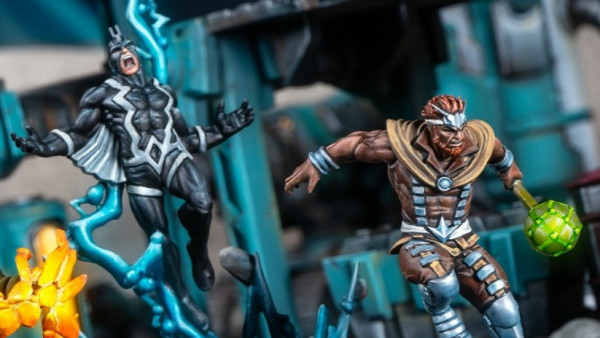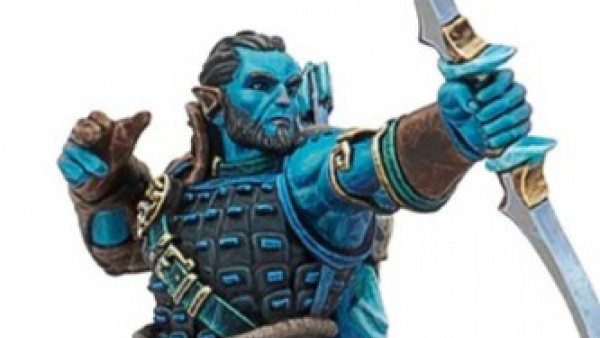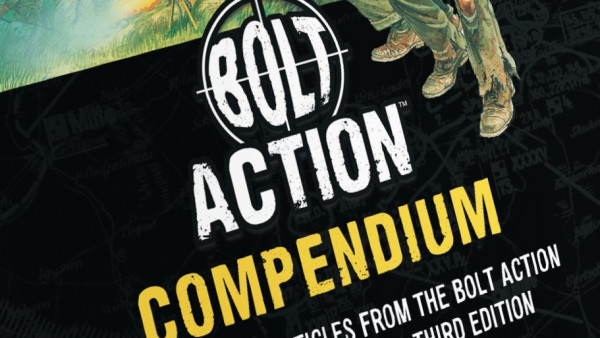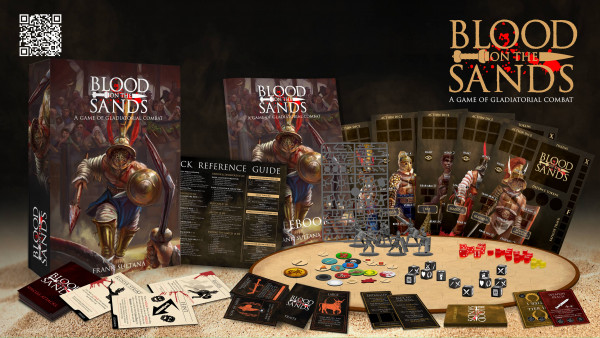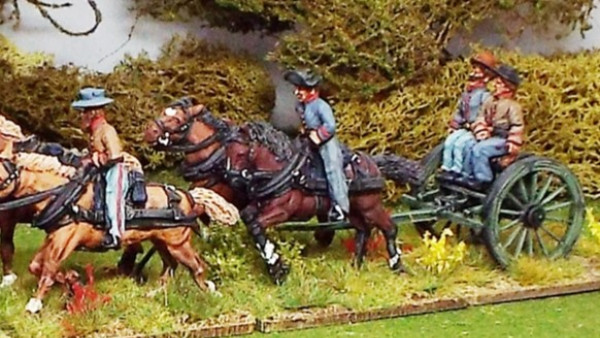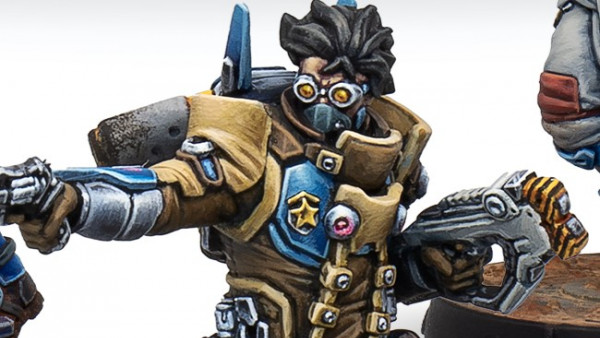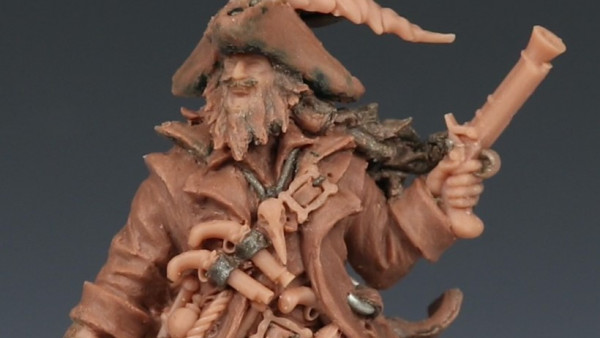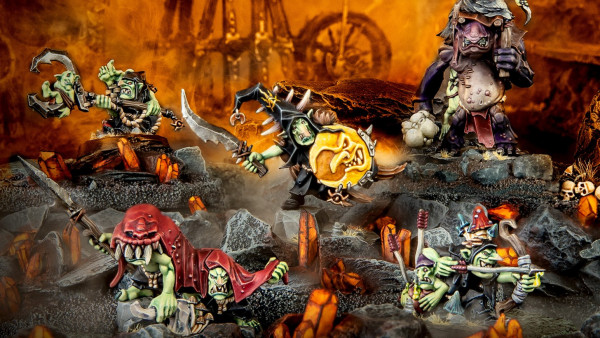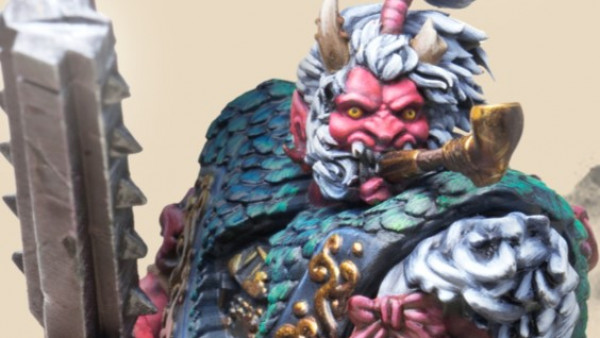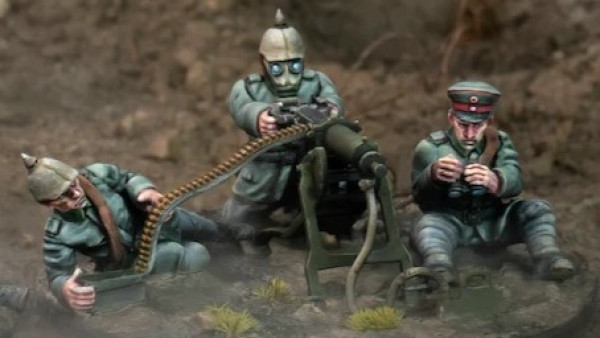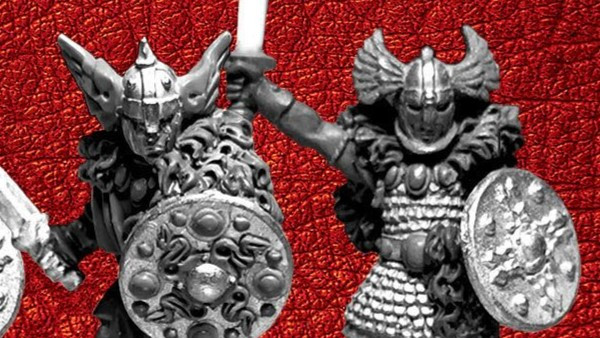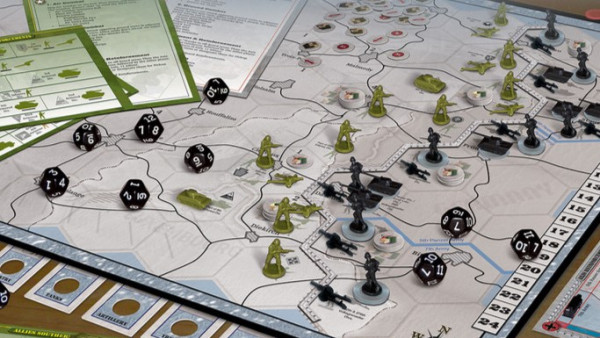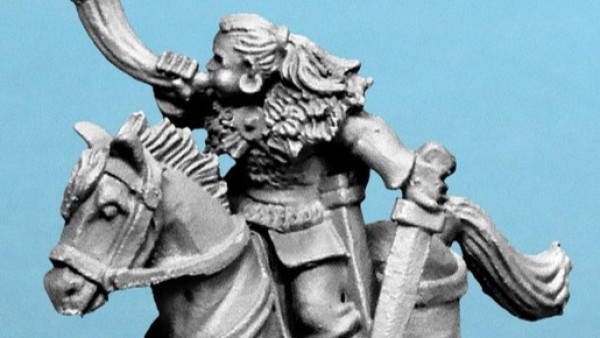Home › Forums › Historical Tabletop Game Discussions › Poland 1939 – Preparing for 80th Anniversary of World War II
Tagged: historical, Oriskany, Poland, World War II, Yavasa
This topic contains 121 replies, has 12 voices, and was last updated by jamesevans140 5 years, 4 months ago.
-
AuthorPosts
-
September 14, 2019 at 3:29 pm #1435721
Good to have you back @yavasa and look forward to talking to you after you have had some sleep. Back near the bottom of page 6 I put some thoughts down about Polish doctrine and I would be very interested in hearing what your thoughts are on the matter.
September 15, 2019 at 1:36 am #1435929
Okay, just had a great game of Darkstar with @damon and now I have to start prep for the Valor & Victory Falklands with @elessar2590 . But between I can get to some replies:
Unfortunately like your self I can only conform the 1st Cavalry Brigade as part of 3rd Corps, Army Group North. – Yeah, that’s what I’m seeing in my sources, aside from the smaller component units I mentioned.
I did come across some supporting evidence for your idea that the German cavalry had been broken into small packets. – Awesome! Although all honesty it’s not really my “idea.” 😀 It’s documentation I found in historical and primary German sources (Infanterie-Reiterzug KStN 181 dated 01.10.1937).
Interesting anecdote about Rundstedt’s flank. He had no cavalry divisions or brigades that I can find. So unless there was a move to take 1st Cav Brigade from AGN /3A’s operational reserve and transfer it to AGS (hence Hitler’s interference… totally guessing here) … he might have considered stripping his cavalry reconnaissance companies of his infantry divisions and forming a flank security force. I do see SS LAH (the 1st SS you mention) Mot. Div in AGS’ OOB (specifically XIII AK, Eighth Army).
Also I came across a mention that a number of Light Divisions were equipped with Pz-35Ts. Although starting to shown its age it was still a formidable tank in the Polish Campaign. – I agree and I agree. 😀 Yes, some Light Divisions were equipped partially with PzKpf-35(t). And yes, they were still respectable assets, given the opposition typically faced and the general shortfall of German armor to fill the “official” Panzer division establishments.

Specifically I’m looking at the:
- 1st Light Division (65th and 11th Panzer Regiments)
- 3rd Light Division (67th Panzer Regiment)
2nd and 4th Light divisions were equipped with a mix of PzKpfw Is and IIs. I should note that even 11th, 65th, and 67th Panzer Regiments were not completely PzKpfw-35(t), but definitely a sizable portion.
September 15, 2019 at 2:14 am #1435931
@yavasa – what I’m able to find re: 5th Cavalry Regiment: Yes, the men were there. But the unit seems to have been broken up and used to raise other units assigned to other divisions. Hence it doesn’t come up in first searches:
via Feldgrau.net:
Between 26 July and 26 August 1939, the regiment was dissolved upon the general mobilization of the German Army, being used to raise :
– 12th Recon Battalion (1 bicycle recon & 1 mounted recon company) (12th Infantry Division)
– 32nd Recon Battalion (1 bicycle recon & 1 mounted recon company)
– the horse recon company of the 175th Recon Battalion (75th Infantry Division).Source: Tessin – “Deutsche Verbände und Truppen, 1919 – 1939”
Biblio, Osnabrück, 1974.Re: the Cavalry company (i.e., squadron) attached to Infantry divisions: According to my books it was a “dywizjon” which would be translated to a battalion but I think a squadron could also be correct) compromised of 162 men and 133 horses. Yeah, that sounds like a company, which matches the 3-platoon organization I see in my sources. Usually in ground cavalry or tanks, squadron = company (162 men sounds almost perfect). That said, sometimes in air cav or air units, squadron is more analogous to a battalion, but that’s way off topic here. 😀
I can see the schützen regiments you’re talking about in the light divisions, and can confirm the numbers you list and their “motorized” makeup … I’ve just never heard them called “kavallerie” before. Strange.
*2nd Light Division below as example:
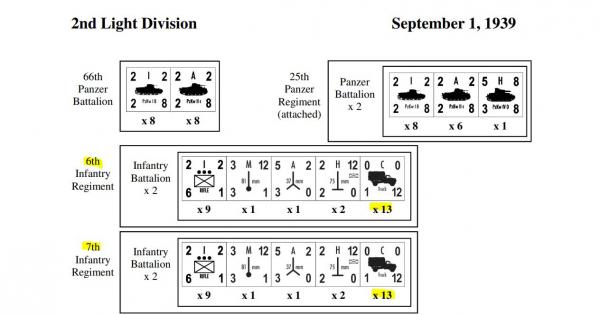
Glad you liked the video. 😀
@jamesevans140 – Not sure if you meant your “disclaimer” as a joke. Sometimes inflection or and tone doesn’t come across right over internet text. So for now I’m going to assume you were being humorous. 😀
Yeah, we’ve been taking it easy with the Stukas. Even when you pile them on (France, Barbarossa, etc), they often don’t come across as the wunderwaffe most seem to expect. Definitely never against tanks. I usually use them against artillery, when they’re 20 H comes in very handy. They also make a mess of “weaker” infantry like Polish KOP or French conscripts … basically because these units have a 5 DF so that 20 divides into a nice 4:1. Any infantry with a DF of 6 (i.e., they’re trained to actually take cover) drops to a 3:1, which is a big drop in this system.
Tanks are nice at occupying ground in the immediate aftermath of a given assault, assuming that ground is rather small, and assuming there is no large body of enemy infantry nearby under cover for close assault counter-attack. Often, the first enemy reaction to losing key ground to tanks is to hit back immediately with whatever can reach … that means artillery, which tanks are very good at resisting. However, “key ground” is often an objective, which is often a town or village, exactly what tanks are terrible at.
Here at Naprawa what I’m doing is shoving PzKpfw IIIs up against the objective, where that welded armor gives them reasonable survivability against the inevitable point-blank fire … long enough to call in that 10.5 cm fire mission. The tanks are killing with their radios, not their little 3.7 cms.
Gotta be honest, I agree with you on the audio. My bane. But I wasn’t re-converting the completed audio track (music, SFX) into a separate .mp3 which I could then re-paste onto a silenced video and then RE-render the whole video, probably losing some of the resolution in the process. That’s three hours of work I just didn’t feel like doing, to be honest.
September 15, 2019 at 9:54 am #1435991Thanks for the reply @oriskany.
There will most likely a sound codex out there that you can install onto either Windows or the app you use to do your sound recording. If you ask the guys the do the recording here at OTT they may be able to help out on that.
I called it your idea concerning the cavalry as it was your postelation on this threat and using that word is a bit too grown up for me. So the word idea was used along with my crayons.
I don’t normally don’t go too much into the rivets vs welding thing. Certainly not the big band production of David Fletcher concerning the rivets on the Italian M11 plus series. There was an instance in the Western Desert where one was hit at just the right angle by an artillery shell and all the armour plates fell off but was not the every day expected inferred by him. Yes rivets popped and sometimes in bad places. What was more important was the quality of the materials and workmanship with many designs being given out to the cheapest bidder. In this respect welding is not that much better and in the wrong hands far worse. The issue here is tempering, heat the metal up you make it harder. Heat it up again and out is soft again it becomes soft again. At this point of the war the welds on the German tanks were made by craftsmen but a little later it is forced labour doing the welding. By far the worst for over cooking their welds were the Russians. On the T-34 there is a weld seam that runs right across the front of the of the upper front hull near the leading edge that was often so badly over cooked you had mild steel for a couple cm either side of the weld seam. A 2cm AT round could target and penetrate this area out to about 300m. On the History Visualized YouTube site found a record in the German archive one month in the mid war period were more T-34s had been knocked out by more 2cm guns than 88cm guns. So the rivets vs weld is not as straight forward as at first look. It really comes down to quality of material and workmanship at that given time on that given tank.
The 7TP was the licenced build of the Vickers 6 ton tank, the same one the T-26 was based on. It was not designed for the British army but purely as an export design for profit. As such the British missed out on having the best light tank design of the 1920/30 period with the exception of the twin turret MG version that was made to compete as an export to the tankette market. The Russians took this design to another level when they upgraded from a 37mm gun to a 45mm gun making it a precursor to the tank destroyer of late war. Like most designs of 1920s/30s it was not reliable and the Russian built version had difficulties with the clutch and transition. Up until the Vickers 6 ton tank France had the lion share of the export market with its FT17/18 design. Vickers was offering a much better product. Goes to show how things have not changed that much as we tend to think of building tanks for export as a modern thing, it only got chapter over time. Finland purchased its Ft17/18s at US$4 million each while Australia bought her M1s at US$5.5 million each.
Yes I could see what you were doing with the Pz-3s next to the objective hex. The most dangerous things do not always come from a gun barrel. @yavasa and have mentioned on a number of posts here just how devastating the German communications net was to the Polish Army.
Effectiveness and effected area is the sum of unit sizes
September 15, 2019 at 9:26 pm #1436228Just a quick one @oriskany
I found the information about the Kavallerie Schutzen Regiment in Janusz Ledwoch’s Kawaleria niemiecka, 2002, which describes the German cavalry from the Versailles Treaty till the end of the Second World War. Also take a look at the online lexcicon der Wehrmacht http://www.lexikon-der-wehrmacht.de/Gliederungen/leichte%20Panzerdivisionen/3leD-R.htm
Same source on the 5th Regiment with Ledwoch but also in Marcin Majewski Kawlaria niemiecka 1939-1945 but I won’t bet on my side of the information. I know they were not using horses so your sources might be more accurate.
September 16, 2019 at 4:38 am #1436314
Very interesting @yavasa – I’ve unpacked my copy of Riders of the Apocalypse (David R. Dorondo) – chronicling German cavalry 1870-1945. With such a broad sweep of history, the information is a little high-level. I’m finding more confirmation of 1. Kavalleriebrigade being the only high-level operational cavalry formation, with cavalry companies being part of each infantry division’s reconnaissance battalion.
The “Kavallerie” regiments in the light divisions, and this is just speculation, might be a holdover from the years Hans von Seeckt ran the Reichswehr (1920-26). Largely responsible for the “organizational DNA” of the Reichswehr that would echo forward into the early WW2 Wehrmacht, among his influences was the creation of the Light Division, which back in 1919 retained a strong cavalry element.
Further clouding (?) the issue seems to be the conversion of “Reiter” regiments to “Kavallerie” regiments, some to aufklärungsabteilung reconnaissance forces, and others to outright panzer formations. The conversion does not seem to be 1-1, so it gets very confusing, I’m not even going to try to untangle it.
I’ve pummeled around the web hitting links and ran across in the Military History Research Center (MGFA) of the Bundeswehr:
In the course of the establishment of light divisions from autumn 1937 a number of cavalry regiments were set up. These regiments were formed, along with the Kradschützen-Abteilungen (motorcycles), the infantry component of the Light divisions and were among the mobile troops. They consisted of two Kavallerie Schützen Abteilungen (battalions) of three squadrons (cavalry companies), a heavy squadron with three 3.7-cm-PaK 36, two light infantry guns 18 (7.5 cm IGs) and six heavy (later middle ) grenade launchers 34 (8.0 cm mortars).
With the transformation of the Light Divisions into Panzer Divisions in late 1939 / early 1940, the cavalry regiments were converted into Rifle Regiments , which were later renamed Panzergrenadier regiments.
The tricky part is it says they were converted to rifle regiments in late 39 / early 40 – not very precise.
I would submit that it’s possible for a unit to be named “cavalry” but in fact already be motorized (truck) infantry. This could be for all kinds of reasons, from stubborn military tradition, administration, uniforms, decorations, pay, etc. The German officer corps was strictly divided into different “branches” like artillery, infantry, later panzertruppe, etc … It may may have just taken a while to transfer all the officers rating from the cavalry branch to the infantry or “schnelletruppe” (mobile troops) branch?
Of course, these are NOT FACTS, just ideas, just spit balling to see why we’re both finding sources that say some of these light divisions had cavalry regiments in them that were not “cavalry” in the physical sense. Even that “Lexicon source” is not clear what these units were actually made of. I wish they would actually include information on what was in the unit’s ToE (table of organization and equipment) rather than naming the town where every barracks was located. 😐 Yes! the training barracks were at Ohrdruf! Now were there horses or Open Blitzs parked out front!?! 🙂
One thing I do find interesting is the fact that rather than drawing down after Poland, German cavalry EXPANDS … and significantly, going forward. As I’m sure you guys know, this is particularly true is Russia, where we see not only cavalry divisions, but SS cavalry divisions, and even a cavalry corps.
September 18, 2019 at 11:43 am #1437511@yavasa I came across a reference that may be of interest to you.
Polen Feldzug: Hilter und Stalin zerschlagen die Polnische Republik by Janusz Piekalkiewicz published in 1982. Unfortunately it does not mention the publisher.
In this book the German general staff daily situation maps have been reprinted in it.
I have a book that reprinted the same maps for the German actions in Finland. I found them very useful with lots of insight. It is amazing the amount of information the Germans record in these maps and the notes they submit with them. Some of the Finnish maps they made are down to hourly updates.
I hope it is some use to you, but as usual out is all from the German point of view.
September 18, 2019 at 3:06 pm #1437581
Part 03 and the conclusion of our Panzer Leader Poland: 1939 game. Admittedly I had to re-upload this … more sound issues … hopefully resolved.
So this closes out the Panzer Leader games for 1939 Poland right now, unless we have any further requests during our usual weekend wargames. 😀
September 19, 2019 at 7:48 am #1437744Truly great game @yavasa and @oriskany! Games like this are the ones most talked about in days to come. Right down to the wire are really exciting games with neither side feeling like they were cheated of victory.
@oriskany risky move on using the armoured cars and some Pz-IIs to take that objective on the upper right flank (Hex 1016???), but it paid off for you.
I love armoured cars, ACs. I tend to use them to recon the enemy line at the beginning of the game. After that they are used to cover likely ambush areas and finally as a part of a combined arms attack with infantry. The one specialised use I have for them is dealing with those nasty Russian MG companies.
@yavasa what can I say mate, it was like that close and it could have been yours. Good solid defence. From memory this was your first time with Panzer Leader. If so it was a truly outstanding performance. You get a victory award for pushing an old hand like @oriskany to the wires. Brilliant.
I would like to see you guys do a series on the Russian invasion of Poland. As far as Russia is concerned it never happened. Under occupation the Poles were not allowed to think it happened and so today we only have the German voice that it did happen. So I would be very interest in what you guys could put together on this subject.
As for the amount of German smoking wrecks @oriskany your not that far off the historical mark. Most of your lost tanks will not be wrecks with less than 28% being total right offs after the battle. The Germans were getting quite worried about the number of their tanks being disabled during battle. Back during the Spanish Civil War even the Pz-1s could hold their own. They could penetrate the front armour of a T-26 at 100m using armour piercing bullets. The T-26 with a 37mm gun could do the same to the PZ-1 at around 500m. But this was the last Harrah for them. Armour became thicker and the 37mm was becoming a standard. As a support to the infantry during the attack they still hard a role that they can fulfill very well. Most light tanks will fire upon another tank with a 20 or 37mm gun before they will fire upon a thing that only has two Mgs that will not harm them.
Again great game guys.
September 19, 2019 at 10:08 am #1437824it’s interesting you mention the Russian invasion James as a friend sent me a link from the Russian embassy a few days ago that out right states that they never invaded Poland.
“the USSR is often accused of invading Poland. Wrong! The Nazis attacked Poland on 1 September. It was not until 17 September, with Polish government fleeing & forces defeated, that the Red Army entered “Polish territories” – Belarus and Ukraine occupied by Warsaw since 1920″
I’m sure that @yavasa and @oriskany will have planned out where they are going over the month. But it is frightening to think that this blatant attempt to rewrite history is still ongoing.
September 19, 2019 at 11:47 am #1437859Thanks this that @avernos. I have seen a few like that.
The strongest argument I have seen is an elaboration of this one. To prevent further suffering of the Polish people forced their hand to act. They did not require permission of the Polish government as act the time the government was not functioning and as such Poland did not exist as a country.
OK that was an interesting view point of the facts at the time of the Russian intervention/ invasion. But this argument totally falls over when you look at the secret inclusions of their peace treaty with Germany dividing up Poland between them months before the German invasion. This makes it premeditated and a stab in the invasion of a hapless country brought to is knees from the German invasion.
Under communist control the poor Poles could not even mention the Russian invasion without three risk of being arrested as a dissident. Further any returning veteran is arrested under the pretext of being a western spy or dissident.
This its where my heart really reaches out to the Polish people. They were never allowed to publicly grieve for the love ones lost or build a memorial for them, being told it never happened and they are confusing their loss with the German invasion. Having never lived under such conditions I can’t really know what it is like being told how to think and what to think about something you know to be false.
I don’t hold anything against the people or the government of the ex Soviet Union of today but I wish that they would at least admit to what Stalin did back then. In my dreams I wish they would start a friendship society and help pay for a memorial for the veterans. It would go a long way towards healing the wound.
September 19, 2019 at 2:51 pm #1437895
Thanks, @jamesevans140 – I completely agree that the games that come down to the wire are always the best ones and most memorable. Not always an easy feat in terms of scenario design, where the historical armies are often so mismatched.
Risky move on using the armoured cars and some Pz-IIs to take that objective on the upper right flank (Hex 1016???) – Absolutely. Hardly the best tools for the job when it comes to clearing wooded hilltops. But I was counting on the radios and communication with indirect artillery. Here I was hoping to use armored cars and PzIIs in their traditional “recon role” – rush out ahead, find the enemy, call in the firepower. Then, shifting to more of a 19th Century cavalry role … take and hold the high ground and hopefully last until the main body arrives.
When it comes to games like this where I design the map and scenario, I’m always reviewing the game on two wavelengths … how I did as a player (certainly not the best, I win and lose in pretty much equal measure) and much more importantly, how I did as a scenario designer. I always say I’d rather lose a game by one point than win by 10 points. Of course, winning by one point is probably the best outcome. 😀
I love armoured cars, ACs. – I know what your mean. Germans, of course, but also British in the Desert and even Americans with their M8s and later M20s. I love ducking way behind what the opponent thought was the main line of contact and hiding armored cars in woods, spotting targets like artillery or command units for artillery or air strikes.
From memory this was [yavasa’s] first time with Panzer Leader. – This series of three games, yes. Game 01 he won with the Poles, but this was more of a playtest and I didn’t give the Germans nearly enough support for a German assault. Game 02 he had the Germans and took a legitimate 4-3 win in a meeting engagement. Game 03, as we see, he game within two or three die rolls on the very last turn of the game of scoring three wins in a row and scoring another upset with the Polish. His schützen assault on my hilltop on Turn 4 of Game Two was truly … and I’m not just saying this to be nice … well done. I know people who have been playing Panzer Leader for ten years and don’t coordinate recon, infantry, and artillery units that well (and of course rolling four 1s in a roll doesn’t hurt!)
You get a victory award for pushing an old hand like @oriskany to the wires. – Agree 100%. Hell, anyone who plays a Panzer Leader family game … on camera, no less, win or lose, is a gaming badass my my book. This would include @brucelae , @damon , @rasmus and @stvitusdancern .
As for the amount of German smoking wrecks @oriskany your not that far off the historical mark. – Yeah, a lot of those are armored cars and halftracks (the older SdKfz 8s, 9s and 10s). I think there’s one platoon of actual PzKpfw IIs burning in there somewhere.
Most of your lost tanks will not be wrecks with less than 28% being total right offs after the battle. – Absolutely. As with a lot of unit-based games, in Panzer Leader a “wrecked” platoon of any sort indicates “combat ineffective” – out of the 3-6 vehicles in the platoon (depending on OOB/ToE), some will be destroyed outright, others damaged, some damaged to the point of write-offs, some panicked / confused crews, etc. Infantry platoons of 40 “eliminated” I usually imagine 8-10 KIA, 15-20 WIA to one degree or another.
I would like to see you guys do a series on the Russian invasion of Poland. – This would be interesting. I have the Barbarossa / Finland Soviet counters that could more or less fill the role.
September 19, 2019 at 3:13 pm #1437900
@jamesevans140 and @avernos – regarding the Soviet invasion on Poland and how even modern Russians, Belorussians, and Ukrainians may see it as “legitimate” …
Obviously I agree that the Soviets invaded Poland on 17 September. It seems crazy that some people like to proclaim it “never happened.” Even when we invaded France in 1944, no matter how legitimate of a “liberation” it was, we still call it an invasion and acknowledge it happened. 🙁
Now to play’s devil’s advocate a little (and I love doing this vis-a-vis the Russians, I’ve read too much Richard Overy and David Glantz so I admit I have a pretty lenient view on the Soviets during World War II) …
I feel this draws back to Versailles (as so much does). In 1919-1920, the political state in what was becoming the Soviet Union was obviously chaos. I don’t think they had a stable government (Russian Civil War still ongoing), much less a seat at Versailles or a “pen on the table” when those clowns were doodling new borders all across Europe. The Second Polish Republic was more or less spawned out of nowhere, taking a slice out of what used to be the German and Russian Empires. So I don’t think the new Soviet Union would have ever seen the borders of Poland as “legitimate.”
Hence we see the almost immediate start of the Russo-Polish War of 1920. Ironically, von Ribbontrop offered the Soviets in 1939 what the British and French denied then in 1919, probably one reason Molotov agreed to the deal despite ideological differences (well, that and postponing a war I think both Berlin and Moscow already saw as inevitable).
Even after Germany invades with Barbarossa, the very first meeting of Molotov and Churchill (October 1941 in London, I think), virtually the first thing Molotov asks for British recognition of the legitimacy of the “Curzon Line” – the re-establishment of which would remain a major focus of Soviet foreign policy all the way through Yalta in February of 45.
In summary, the Soviets never felt their border between Poland was drawn legitimately in 1919, and never recognized it. From their view, they were re-taking what had been stolen from them by London and Paris in the Versailles Treaty. This might explain some of what we hear out of Russia, Belarus, and Ukraine to this day. I’m not saying I completely agree, just offering where some of it might come from.
September 19, 2019 at 11:09 pm #1437955Thanks for joining in @oriskany. I live in Canberra, the capital of Australia, and as such we have a very large portion of the populous being foreign. So I have met and even worked with expatriates and those that are here only for a few years, this includes Russian and Poles. To these guys it is still a hot, sore and bitterly contested point with tremendous emotion. When with either party it is best to nod your head and make non committal noises. Only an idiot will invite both parties to a function that had alcohol.
So yes I have heard what you have raised here and another version contests they moved in to only what the Allies legitimately gave them at the end of the war.
For me on this tract of thought I still have issues. If one takes back what they completely believes that is theirs they sing it to the world looking for at least one major power to back their position to legitimate their action. What one does not do is make secret whispers in dark places and once completed attempt deniability. So privately I don’t believe this excise floats either.
On the offhand this is a good example of Stalinist twist the truth, injects lies and twists and folds it again. By the end of the day there is enough doubt and grey areas to prevent a positive action. On the offer hand if you push for a positive action, well you are just an anti communist on a crusade and they request that some one restrain this maniac. Truly effective and effectively shown in the book Animal Farm. On a side note my grand daughter loves reading about this early period of Stalinist Russia and she was amazed when I showed here how to read it properly. For some reason in school literature today in Australia they teach it at face value without a mention of is political sub story.
Actually you have brought up a point that I ponder from time to time. Did we liberates France or did we just about do our best to destroy that land and it was for their own good. This is another one where truth gets twisted depending on the guilt, shame our white washing of their personal.
I think personally it is time to put this side of WW2 to bed and simply allow the facts to become stone cold facts, like the history of Rome. It is time to stop hunting down Nazis as those who are now still alive were just brain washed kids. Australia went through this painful act back in the late 70’s when it became logical to make Japan our major trading partner. This was extremely hard when you consider the criminal, sadistic and inhumane things that they had done to us during WW2. Today we have created a juggling act when we also made China an equal trading partner to Japan. The hatred between these two are insane. Last year Japan started to build memorials to their war dead which was denied them as an outcome of WW2. Most Australians firmly believe the Japanese be allowed to mourn their dead. Given that China requested that the outcome of WW2 be enforced to prevent the building of these memorials Australia remained politely silent on the topic. China became angry over our silence and accused us of being pro Japanese and anti Chinese.
I suppose the counties of the world are not happy unless they are arguing over something.
Getting back on topic I have made my stance on the Russian invasion of Poland. However contradictory this may sound is that I have the greatest respect for the Russian people and acknowledge their suffering under the German invasion. This may also show that my mind is bent. Growing up in the cold war era I was brain washed at every opportunity to believe that Russia was the satin’s spawn, the cause of all evil and must be eradicated from face of the earth with extreme prestigious. So I do understand how so many in old Stalinist Russia totally believe that the Russian invasion of Poland never happened and out is all lies from the West to discredit them; or is my bent brain washed mind is still miss firing? ?
September 22, 2019 at 10:47 am #1438755Hi guys,
Sorry for not being active but I am having hell of a time at work right now plus caught a cold yesterday so not really in the best shape. Anyway, great you keep the thread going @avernos @jamesevans140 and @oriskany 🙂
Thanks flr the kind words on our game. I am still learning Panzer Leader but I am loving it. Need to get some more games in soon hopefully.
On the Russian “we did not invade Poland in 1939” topic. Long story short Ribbentrop-Molotov pact. That’s really all into it. As for today’s refusal to acknowladge what Stalin ordered I assume it’s just historical policy of the state. Remember, Russia was a part of the big three in 1945 so I assume it’s better for them not to remember that feom 1939 until 1941 they were almost allied to Germany. It’s as with Poles that don’t like to acknowledge that since Pilsudski’s May coup we were actually an authoritarian state with Bereza Kartuska a place for people not acceoting the government.
-
AuthorPosts
You must be logged in to reply to this topic.





























